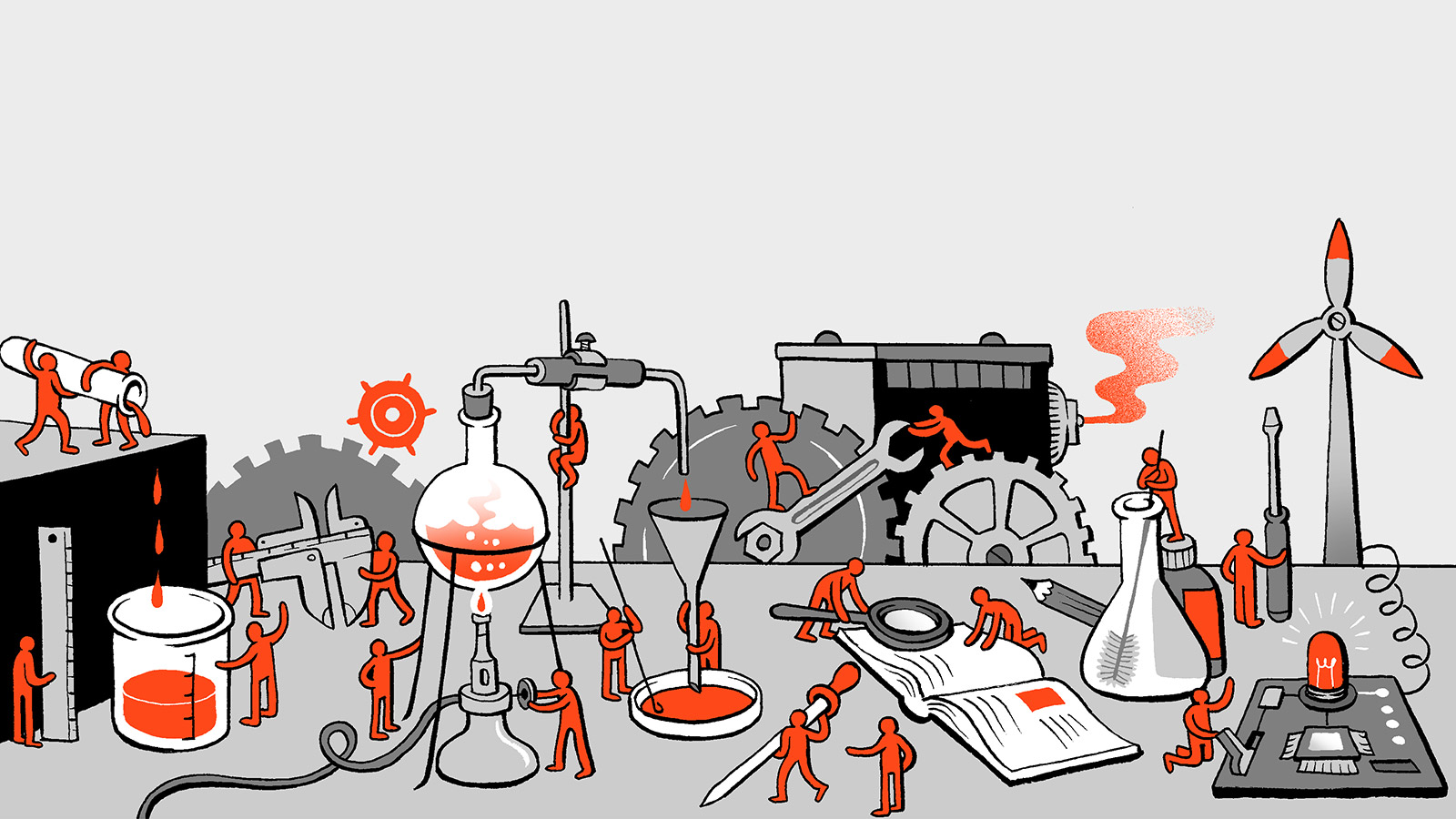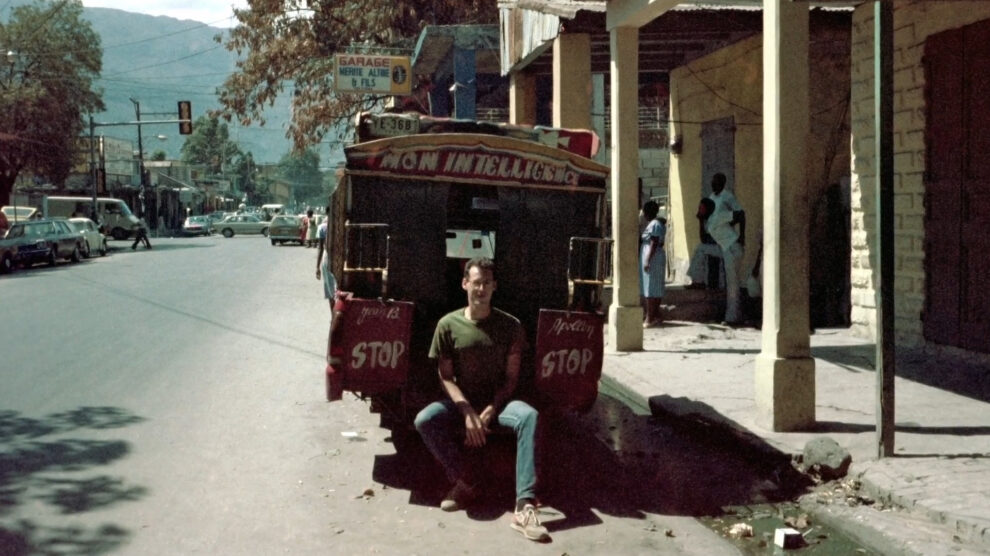
Birthwork as Intifada: A Site of Resistance and Return
By Wahi Mohamad and Touka Shamkhi
Israel’s genocidal campaign has notoriously transformed health infrastructure into the primary site of war, leaving almost all hospitals across Gaza non-functional. Amid a burgeoning public health catastrophe, the plight of pregnant Palestinians and their newborns hangs in the balance. We contextualize the on-going genocide as the culminating expression of Zionist necropolitics, where Israeli rule is legitimized through the domain of death. Despite these harrowing conditions, we highlight the valiant work of birthworkers in Gaza as they sustain Palestinian life in the face of imminent erasure. Accordingly, we re-define birthwork as a site of political praxis serving as one of the many fronts of Palestinian resistance. To explore these intersections, we trace the historical and political forces shaping Palestinian birthwork and focus particularly on midwifery as an investigative lens into the pillars of Palestinian resistance: sumud, rupture, and return.
Israeli Sovereignty and the right to kill
The destruction of health infrastructure precedes the current genocidal offensive, as seen through the continuous targeting of healthcare in Gaza and the West Bank.1 Additionally, Israel has long denied Palestinians access to equitable reproductive care services, as exemplified by cases of Palestinian women forced to give birth at checkpoints while barred from accessing life-saving care.2 In Gaza, where the Zionist entity controls what resources enter and exit the strip, health professionals often deal with shortages of pain medications. This often means that pregnant Palestinians undergo labour without anesthesia, further exacerbating complications during cesarean and abdominal surgeries.
In this context, transforming hospitals in Gaza into active war zones embodies a cornerstone of Israel’s occupational strategy. This is echoed by Dr. Ghassan Abu Sittah, a surgeon who spent over a month working at Al-Shifa hospital, Gaza’s largest medical centre. He emphasized how the destruction of hospitals is a deliberate military strategy meant to condemn all inhabitants to an agonizing demise.3 This genocidal strategy has spared no one, as Israeli occupation forces intentionally target hospitals housing neonatal floors and premature babies.4 Consequently, the conditions of Palestinian birthwork cannot be untangled from the realities of military occupation.
These acts of Zionist violence reflect the incessant need to maintain total domination over Palestinians’ existence. As C. Heike Schotten notes, “Indigenous peoples’ continued existence not only challenges settler sovereignty’s claim to legitimacy and ‘first’-ness, but is the harbinger of that sovereignty’s death.”5 Zionism’s own survival is thus tied to the fundamental control of Palestinian life as expressed through its legal, social, and political apartheid system. In its 76-year span, however, the Israeli entity has failed to extinguish the Palestinian spirit of resistance, as embodied in Gaza’s resilience in the face of a sixteen-year land, air, and water siege. By failing to extend Zionist sovereignty over Palestinians, the entity succumbs into its own contradiction – the existence of Palestinians on the “land without people.”6
Cameroonian scholar Achille Mbembe captures the dynamics of state sovereignty and war in his influential essay Necropolitics, stating “the ultimate expression of sovereignty resides, to a large degree, in the power and the capacity to dictate who may live and who must die. Hence, to kill or to allow to live constitutes the limits of sovereignty.”7 While Israel governs all Palestinians by dictating their conditions of existence, via checkpoints and permits, Gaza has been especially subjugated through the domain of death. Even prior to the genocide, Israel’s legitimacy has been expressed through transforming Gaza into a “death-world”— a purgatory between living and non-existence.8 Israeli officials have been found to limit food imports to satisfy the minimum required calories for survival.9 The on-going genocide is thus the culminating expression of Israeli sovereignty through “control over mortality” itself.10
As Palestinian birthworkers are left with no choice but to navigate this necropolitical terrain, what differentiates death from the status of suspended living? When saving a life means returning to the Israeli death realm, how can new life emerge into a world of living dead? In attempting to reconcile these contradictions, we must situate Palestinian birthworkers on the frontiers of the Zionist war machine.
Birthwork under occupation
To re-contextualize birthwork as resistance, we must first unpack its entanglements with colonial rule and discipline. We define birth-work as the practice of supporting the birthing process, all the way from preconception planning, the prenatal period, to labour and delivery, and further into the postpartum. This means that birthwork doesn’t begin or end at birth but encompasses all the experiences involved in the creation and sustainability of a new life. Birth-workers comprise a range of practitioners, from emotional support doulas to midwives and specialized OB-GYN doctors. While the medicalization of birth has standardized the work and scope of medical doctors, midwifery encompasses a care approach embedded in the “biological, psychological, social and cultural processes of childbirth and early life of the newborn.”11 The role that a midwife takes on is informed by local politics and history, unique population needs, and available resources.
As reproductive care inequalities reflect the disparities between Western countries and the Global South, birthwork ultimately reflects the larger forces of colonialism and imperialism. While the Western reproductive model prioritizes the medical aspects of birthwork, Indigenous Palestinian birthwork practices are deeply entrenched within the political struggle for liberation. In re-contextualizing birthwork as a site of political praxis, it is critical to understand how colonial structures have shaped Palestinian reproductive care.
British-Mandate
During the British-mandate period, traditional Palestinian midwives, referred to as dayat, were heavily demonized, policed, and disproportionately regulated in favour of the imposed Western midwifery model.12 Historically, dayat were highly respected members and leaders in the community who provided gynecological, obstetric and pediatric care. Additionally, dayat often named the child, and planned and attended ceremonies. In this view, dayat did not only shepherd new life and guide families throughout the birthing process, but also acted as cultural custodians passing down tradition. The Midwives Ordinance, enacted by the British-mandate government from 1920 to 1948, “exemplified British concerns and assumptions […]—specifically, the disciplining of the colonized working classes and that male, Western-trained medical practitioners should ultimately supervise the provision of healthcare.”13 Here, the white British midwives in Palestine functioned as an extension of the occupation forces, enforcing the Midwives Ordinance as a means of controlling Palestinians’ ability to practice and access reproductive care services.
Consequently, Palestinian midwives were inspected, policed and even prosecuted for practicing outside of the colonially defined scope. These policies were justified by positioning Palestinian midwives as “backwards” and unskilled–in contrast to the white midwives who sought to “civilize” the “primitive” ways of their racialized and colonized counterparts. The Ordinance had also put Palestinian midwives at an economic disadvantage by limiting their practice to prescribed areas outside of towns and cities. Additionally, the British-mandate government worked closely with Zionist forces, even prior to the Nakba, by prioritizing reproductive care services for recent settlers. As noted in a letter from the health department to Lord Nodel Buxton on December 10, 1930, the colonial government had designated one Infant Welfare Center (IWC) per 35,824 Palestinians, in comparison to one IWC per seven thousand Jewish inhabitants.14
Following in its predecessor’s footsteps, the Israeli apartheid regime has continued to enact control through reproductive violence. The UN Human Rights Council estimates that twenty-five hundred Palestinian pregnant women face significant difficulties in reaching birthing facilities every year, increasing the risk of maternal and infant mortality.15 Armed Israeli settlers in the West Bank further restrict movement and access to hospitals with full impunity.16 These dire conditions are externally manufactured by the occupation forces, enacting a medical apartheid over Palestinians.
Birthwork under Settler Colonialism
Medical apartheid, as a function of settler society, subjugates native populations by manufacturing health inequalities via the State apparatus, including courts, prisons, and other administrative institutions. This is not unique to Israel and can be seen through Canada’s own treatment of its Indigenous people. Writing from the imperial core as students and practitioners critical of Canada’s unconditional support of Israel, it would be remiss not to highlight the similarities of sovereign encroachment onto Indigenous birthwork.
Canada’s support for Israel’s genocidal campaign is consistent with its ongoing violence against the Indigenous peoples of Turtle Island. Indigenous birthwork practices have been forcibly replaced with a Western medicalized model to the detriment of mothers and their newborns. This has culminated in the routine forced evacuation of pregnant Indigenous people away from their local communities and relocation to urban centers to await labour and birth. In 2022, the federal government spent over 600 million dollars to fund medical transportation, including birth evacuations—despite evidence of worsened health outcomes.17 According to Indigenous birth workers and activists, birth evacuations have a “devastating impact both on the preservation of culture and on maternal and newborn health outcomes in Indigenous communities across Canada.”18 The government’s continued investment in this policy, despite its damaging social and medical impacts, emphasizes the continued subjugation of Indigenous life.
The reproductive violence experienced by both Indigenous people on Turtle Island and Palestinian mothers in Gaza highlights the shared struggle for self-determination. As birth evacuations have severed Indigenous networks of care, Palestinian mothers navigate labour under constant threat of bombardment amongst the decomposing remains of their loved ones. These harrowing conditions reflect the foundational difference in performing birth work simply as a clinical practice versus a political practice, modeled by Palestinian midwives navigating the ongoing genocide as both care providers and survivors. Ultimately, this dual positionality necessitates a political praxis, imbuing Palestinian birthwork with a radical commitment to liberation.
Birthwork as resistance
Practicing birthwork under occupation effectively reveals the ubiquity of colonial violence under Zionist rule. Palestinian writer Fargo Tbakhi describes this recurring encounter as the “long middle” —or the microscopic infrastructure maintaining the Zionist war machine.19 Being forced to give birth at military checkpoints, for example, is emblematic of the “static temporality of enduring violence,” rather than a single occurrence of Zionist aggression.20 This routine violence further manifests into psychological warfare with the intention of making subjugation seem inescapable and resistance futile. Despite this relentless brutality, Palestinians have maintained sumud, or a steadfast commitment to resistance manifesting as various “forms of care, of tenderness, of violence, of ingenuity, resource, and survival.” 21 In this light we understand Palestinian resistance as the constant intifada, puncturing through the material, temporal, and psychological fabric of occupation.
In this vein, birth workers form an integral part of this revolutionary framework. This is best exemplified by the work of Samah Qeshta, a 29-year-old midwife in Gaza that consistently risked her own life in service to her community, all while navigating her own birth and postpartum.22 Rather than succumbing to a sense of hopelessness under constant bombardment and brutal siege, Qeshta asserts, “every time I help a woman give birth, every time I hold a newborn baby in my hands, I thank God. I feel happy that God offered us a new life, a new person.”23
The occupation forces have long recognized the revolutionary capacity of birthwork, as Palestinian midwives describe their persecution spanning back to the First Intifada.24 Feeza Sharim describes being “held at gunpoint by Israeli soldiers, barricaded in a hospital for 48 hours, and at times sneaking out in the middle of the night hidden in a vehicle,” all to provide life-saving work for Palestinian women and their newborns.25 This ferocious dedication not only serves to maintain the sanctity of every life, but further rejects Israel’s sovereign claim over Palestinian existence.
In the same way that birthwork shatters the facade of Israeli permanence, it also rejects the “erection of a singular settler-colonial future.” As the occupation unleashes violence in the ‘now’, birth workers maintain a lifeline to a liberatory future untethered from Israeli besiegement.26 By revisioning the delivery of new life as truncated flashes of freedom, birthwork ruptures through the Zionist temporal infrastructure, widening its cracks and fissures for return. Emphasizing a cornerstone of Palestinian resistance, writer Adam Hajyahiya defines the principle of return as the “abolition of the conditions that render exile the only remaining possibility.”27 Thus, by rejecting all facets of Zionist temporality, birthwork becomes the harbinger of liberation, ushering “negative spells of time, no matter how short or fleeting they are, as returned beings.”28 In other words, every new life delivered through birthwork symbolizes a return to liberation expressed through rejecting Israel’s time regime. With this in mind, Samah Qeshta continues to support mothers like Iman Abu Mutlaq in delivering twin babies, while her husband, Ayman Abu Odah, decides to name them after his two nephews martyred by an Israeli air strike. Invoking the promise of return Abu Mutlaq says: “The situation is difficult, but God offered me two babies, two heroes.”29
Solidarity and Praxis through Birthwork
By affirming the Palestinian struggle for self-determination, we redefine birthwork as a revolutionary political praxis embedded within the fabric of the constant intifada. From Palestine to Turtle Island, Indigenous birthwork embodies a refusal of colonial-capitalist defeatism. Rather than surrendering to the oppressive structures seemingly above reproach, birthwork encourages us to “tie ourselves to one another to stop the dailiness from getting through.”30
While pictures circulate of lifeless Palestinian babies laying in an incubator—it is inconceivable that every midwife is not outraged by the atrocities of the Zionist entity. Western midwives are further implicated in Israel’s crimes, as their taxes are funneled to weapons manufacturing responsible for murdering their Palestinian counterparts. Yet, the profession’s dominant culture deems solidarity with Palestine as beyond the scope of practice. This institutionalized inertia represents a core essence of Western midwifery practice, unwilling to reconcile with its colonial legacy in Palestine and Turtle Island.
To continue practicing midwifery without rallying against Canada’s own complicity in genocide stands as a breach of duty towards compassionate and dignified birth care. By adopting Palestinian birthwork as a political praxis, Western midwives in Canada and beyond must shift their solidarity efforts towards disrupting the status quo. This means cultivating a radical consciousness capable of recognizing disciplinary backlash as contingent on the temporary existence of Israel. By rejecting the common Zionist tactics of intimidation and silence, birthworkers in the West reaffirm Palestinian liberation as imminent and inevitable.
Meet the contributors:
Wahi Mohamed: Wahi is a master’s student in anthropology and African studies at Carleton university. Her research interests focus on the intersections of global health and western imperialism.
Touka Shamkhi, RM: Touka is a midwife who is passionate about decolonial health and reproductive care. Touka has published research on the experiences of racialized midwifery students in the Canadian Journal of Midwifery Research and Practice.
Notes
- Yazid Barhoush and Joseph J. Amon, “Medical apartheid in Palestine,” Global Public Health 18, no. 1 (April 2023): 1-13.
- Halla Shoaibi, “Childbirth at checkpoints in the occupied Palestinian territory,” The Lancet (July 2011): 2011-4.
- 3. Ghassan Abu-Sitta. 2024. “I Spent 43 Days in Gaza’s Now-Destroyed Hospitals. My Mind Is Still There,” Al Jazeera, May 3, 2024, https://www.aljazeera.com/opinions/2024/5/3/i-spent-43-days-in-gazas-now-destroyed-hospitals-my-mind-is-still-there.
- 4. “Two Premature Babies Die, 37 under Threat at Gaza’s al-Shifa Hospital,” Al Jazeera, November 11, 2023, https://www.aljazeera.com/news/2023/11/11/37-babies-at-risk-of-dying-in-gaza-hospital-israel-says-to-aid-evacuation.
- 5. C. Heike Schotten, Queer Terror: Life, Death, and Desire in the Settler Colony. (New York: Columbia University Press, 2018), 249.
- 6. A common Zionist saying legitimizing the creation of Israel insinuating “a land without a people for a people without a land”.
- 7. Achille Mbembe, “Necropolitics,” Public Culture 15, no. 1 (Winter 2003): 13.
- 8. Mbembe, “Necropolitics”, 40.
- 9. “Israel Gaza Blockade Study Calculated Palestinians’ Calories,” Reuters, October 17, 2012, https://www.reuters.com/article/world/israel-gaza-blockade-study-calculated-palestinians-calories-idUSBRE89G0NM/.
- 10. Mbembe, “Necropolitics”, 11.
- “Definition of Midwifery,” International Confederation of Midwives, June 9, 2023, https://internationalmidwives.org/resources/definition-of-midwifery/.
- Elizabeth Brownson, “Enacting Imperial Control: Midwifery Regulation in Mandate Palestine,” Journal of Palestine Studies. 46, no. 3 (2017): 27–42.
- Brownson, “Midwifery Regulation,” 27.
- Brownson, “Midwifery Regulation ” 28.
Note: This statistic highlights a discrepancy of over 5 times the access to IWCs for Jews living in Palestine compared to Palestinians. The use of the population descriptor Jews is not to conflate Judaism with Zionism, rather because that was the descriptor used in the original resource as cited by Brownson. The resource cited differentiates between Jews and Palestinians, thus implying that the 2 populations discussed are non-Palestinian Jews living in Palestine, and Indigenous Palestinians.
- “Annual Report of the UN High Commissioner for Human Rights and Reports of the High Commissioner and the Secretary-General: The Issue of Palestinian Pregnant Women Giving Birth at Israeli Checkpoints”, United Nations, January 1, 2003, https://www.un.org/unispal/document/auto-insert-186867/.
- Berit Mortensen, “Palestinian midwives on the front line”, Journal of Middle East Women’s Studies 14, no. 3 (2018): 379-383.
- “End Forced Birth Evacuations.” NCIM, January 30, 2024, https://indigenousmidwifery.ca/end-forced-birth-evacuations/#1705311421639-2c3a4767-9bef.
- “Indigenous Midwifery in Canada,” NCIM, April 17, 2019, https://indigenousmidwifery.ca/indigenous-midwifery-in-canada/.
- Fargo Tbakhi, “Notes on Craft: Writing in the Hour of Genocide,” Protean Magazine, December 8, 2023, https://proteanmagstaging.wpcomstaging.com/2023/12/08/notes-on-craft-writing-in-the-hour-of-genocide/.
- 20. Adam Hajyahiya, “The Principle of Return,” Parapraxis, accessed August 25, 2024, https://www.parapraxismagazine.com/articles/the-principle-of-return.
- Tbakhi, “Notes on Craft”.
- Nidal Al Mughrabi, Amina Ismail, and Stephan Grey, “At a Gaza Hospital, a Midwife Brings Life and Volunteers Tend the Dead,” Reuters, November 18, 2023, https://www.reuters.com/investigates/special-report/israel-palestinians-gaza-days/.
- Al Mughrabi et al., “Gaza Hospital.”
- Sustained series of protests, acts of civil disobedience and riots carried out by Palestinians in the late 80s and early 90s against Israeli occupation.
- Nida Khan. “A Palestinian Midwife Who Defies the Odds,” Women’s Media Center, September 29, 2010. https://womensmediacenter.com/news-features/a-palestinian-midwife-who-defies-the-odds.
- Hajyahiya,“The Principle of Return.”
- Hajyahiya,“The Principle of Return.”
- Hajyahiya,“The Principle of Return.”
- Al Mughrabi et al., “Gaza Hospital.”
- Tbakhi, “Notes on Craft.”




